메시지 전송 시, 오류가 발생하였습니다. 재시도하십시오
사업 영역
로그인
산업
솔루션
메시지 전송 시, 오류가 발생하였습니다. 재시도하십시오
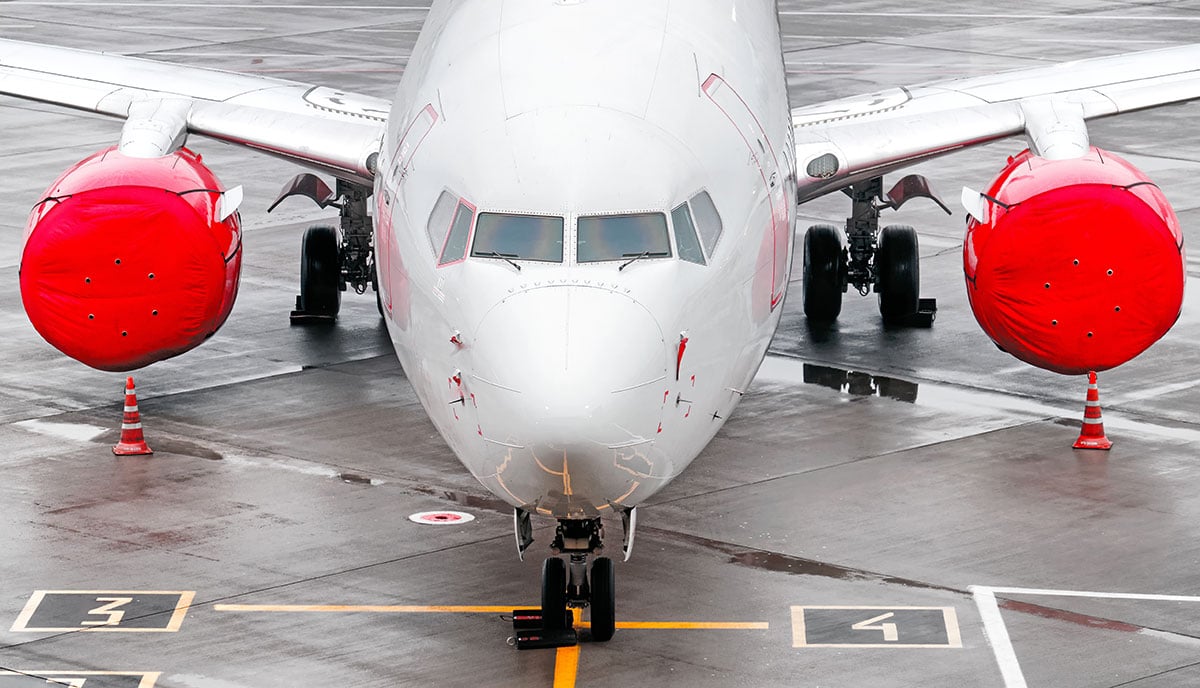
Dehumidification efficiently protects grounded aircraft from moisture related damage on a short or long term basis and ensures operational readiness for airlines and airports around the world.
The world’s airlines have been hit hard by the Covid-19 pandemic. Many aircraft have been grounded indefinitely, and are now at significant risk of costly damage from moisture related issues such as condensation, mould and corrosion.
Munters' solution
Fleet owners, aircraft owners, national airlines and maintenance hubs at airports can all benefit from finding the right climate control solution for their needs and Munters has global experience on preservation of grounded aircraft, military as well as civil.
By protecting the interior of the grounded aircraft by means of Munters dehumidification, the humidity within the cabin will be lowered and fully controlled. Maintaining the relative humidity at a low level, irrespective of the outdoor fluctuating conditions, the cabin incl. seats, carpets, electronics will be effectively protected against any humidity related damage.
|
|
BENEFITS: |
|
|
|
|
|
Significantly reduce unnecessary and costly aircraft maintenance by preventing condensation, mould and corrosion. |
|
|
|
|
Prevent costly and often irreparable damage to the internal fabric of the aircraft |
|
|
|
|
Protect against corrosion and damage to avionics and electrical systems |
|
|
|
|
Help ensure grounded aircraft are operational and ready to fly when needed |
|
|
|
|
|
|
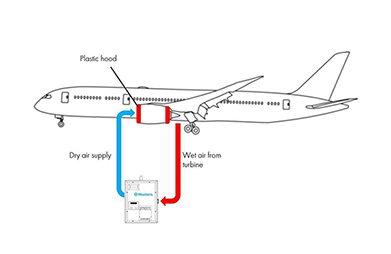 |
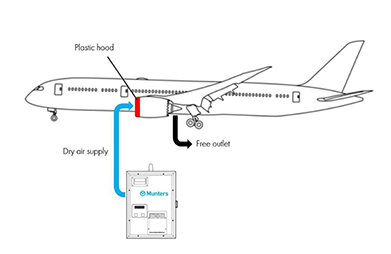 |
|
Protection of turbines |
|
| For protection of smaller turbines a so-called ”fresh air solution” is recommended. Dry air from the dehumidifier is lead to the turbine and the wet air exits the turbine into the open. | For bigger turbines the wet air is returned to the dehumidifier’s dry air inlet, in a so-called “return air system”. This principle will increase both energy efficiency and dehumidification capacity. |
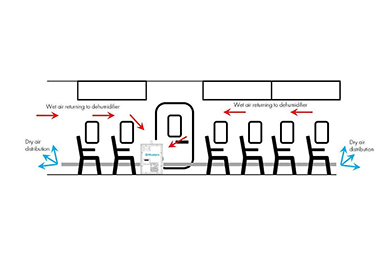 |
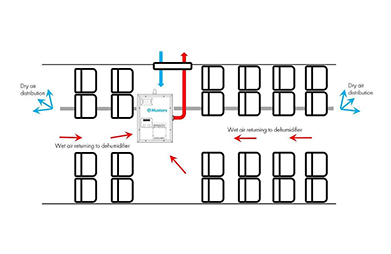 |
|
Protection of aircraft interior |
|
| The dehumidifier is placed centrally in the cabin. By means of the extraction fan in the dehumidifier, the humid air from the cabin enters the dehumidifier and the humidity is absorbed by the desiccant wheel (rotor). | The dry air leaving the rotor is distributed within the cabin via flexible ducts along the aisle, typically under the seats. This allows for efficient protection of all parts of the cabin. The in- and outlet for the air used for the regeneration of the rotor can be lead to the open air via an opening in a window, e.g. in one of the doors of the aircraft. |
Decades of experience in providing humidity control systems for civil and military aviation. Learn more about climate control solutions for manufacturing of aircraft components and testing, plus CTT Systems’ Cair and Zonal Drying System using Munters low humidity solutions on our Civil Aviation page.
In addition, Munters engineering team has experience of working at airports including Birmingham, Luton and Heathrow in upgrading their air handling units (AHU), for more about this solution, visit our AHU upgrades page.
아이디 또는 비밀번호를 다시 확인하세요
오류. 나중에 다시 시도하십시오
비밀번호를 잊으셨나요?
아이디 또는 비밀번호를 다시 확인하세요
오류. 나중에 다시 시도하십시오
Check your email within a couple of minutes to reset your password, if you can’t see any incoming messages try to check into your spam folder!